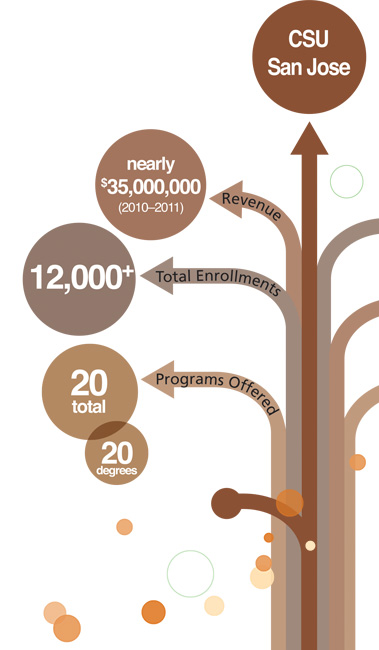
Model 6
Opening the Doors and Lowering the Walls: Responding to a Region’s
Forefront Industries
Context and Challenges: Starting in the mid-1950s, the Santa Clara Valley at the southern end of the San Francisco Bay area began an evolution that resulted in the region’s now internationally famous designation—Silicon Valley. This region, home to San Jose State University, also houses a range of businesses and technology firms that have had a game-changing impact on the world economy, on the ways we work, teach, learn, play, live, and communicate. As a hub for what is at the technological forefront today and what will emerge tomorrow, Silicon Valley attracts leading researchers in technology, engineering, design, and construction. Such exceptional minds see possibilities where others do not.
Several leading research universities, both public and private, and leading firms in the region collaborate on projects with research centers and universities worldwide. The CSU campuses serving Silicon Valley face two major challenges: How can a campus best contribute to the regional economy and regional communities? And how can its faculty and students benefit from this exceptional context, in which the forefront of research is as much outside the universities as inside them?
The Strategy – Lowering the Walls and Opening the Doors: During the past decade, San Jose State University has used self-support along with state funding and the campus’s applied research strengths to develop a robust and increasingly seamless relationship with Silicon Valley. As the pace of technological innovation increases, innovative research and teaching must pick up speed. Regional engineering and technology firms employ highly trained engineers, but those engineers want to remain current and to move to higher, more specialized levels of professional development. San Jose has linked its engineering faculty with regional firms to develop advanced degrees in engineering, which are offered on-site.







